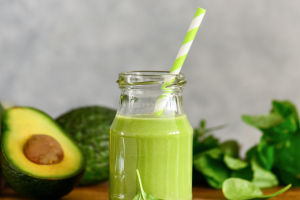In the realm of kitchen appliances designed to extract juice, wall breakers and juicers stand out as two distinct options, each with its unique mechanisms and effects on the juice produced.
Understanding the differences between these devices, as well as how they influence the taste and texture of the juice, can help consumers make informed choices based on their preferences and needs.
Wall Breaker: The Mechanism
A wall breaker, also known as a blender or a high-speed blender, is a versatile appliance that can handle a variety of tasks, including blending, chopping, and crushing.
Unlike traditional juicers, a wall breaker does not separate the juice from the pulp but rather blends the entire fruit or vegetable into a smooth mixture.
How It Works:
Blending Process: Wall breakers use high-speed blades to pulverize the fruit or vegetable, including its skin, seeds, and fibers. The result is a smoothie-like consistency where all parts of the produce are included.
Texture and Consistency: The juice produced by a wall breaker is typically thicker and more fibrous due to the presence of pulp and other solid components. This method retains more of the fruit's or vegetable's natural fiber, which can be beneficial for digestive health.
Juicer: The Mechanism
Juicers, on the other hand, are specifically designed to extract liquid from fruits and vegetables while discarding the solid remnants, such as pulp and skins. There are several types of juicers, including centrifugal, masticating, and triturating juicers, each with its own method of extraction.
How It Works:
Centrifugal Juicers: These use a spinning blade to shred the produce and a centrifugal force to separate the juice from the pulp. They are quick and efficient but may generate heat, which can affect the nutritional quality of the juice.
Masticating Juicers: Also known as slow or cold-press juicers, these use a single auger or screw to crush and press the produce, extracting juice while preserving more nutrients and enzymes. This method is slower but often yields a higher quality juice.
Triturating Juicers: These are dual-auger machines that crush and grind the produce more thoroughly, producing a very high-quality juice with minimal oxidation.
Texture and Consistency: The juice from a juicer is usually smooth and free of pulp. It has a lighter, more refined texture compared to the thicker, more fibrous juice from a wall breaker.
The taste and nutritional content of juice produced by a wall breaker versus a juicer can vary significantly due to the different processing methods.
- Taste Differences:
Wall Breaker: The juice from a wall breaker often has a richer and more robust flavor because it includes all parts of the fruit or vegetable. The presence of pulp and fiber can also contribute to a more textured and sometimes more earthy taste.
Juicer: Juice from a juicer is typically smoother and more refined in flavor, with a clearer, purer taste of the fruit or vegetable. The removal of pulp and solids can result in a more concentrated flavor profile but may lack some of the complexities found in blended juices.
- Nutritional Differences:
Wall Breaker: The juice retains the whole fruit or vegetable, including fiber, which can aid digestion and provide a more gradual release of sugars into the bloodstream. This can be beneficial for maintaining steady energy levels and promoting overall gut health.
Juicer: The juice is stripped of fiber but often contains a higher concentration of vitamins, minerals, and antioxidants since the extraction process retains the nutrients found in the liquid portion of the produce.
However, the absence of fiber means that the juice may lead to quicker spikes in blood sugar levels.
Choosing the Right Appliance
When deciding between a wall breaker and a juicer, consider your personal preferences and dietary goals:
Wall Breaker: Ideal for those who enjoy smoothies and are looking for a quick and versatile appliance. If you prefer a thicker consistency and want to retain the fiber from your fruits and vegetables, a wall breaker is a great choice.
Juicer: Best suited for those who want pure, smooth juice with a concentrated flavor and higher nutrient density. If you prefer to avoid pulp and focus on extracting the maximum amount of liquid from your produce, a juicer would be more appropriate.


